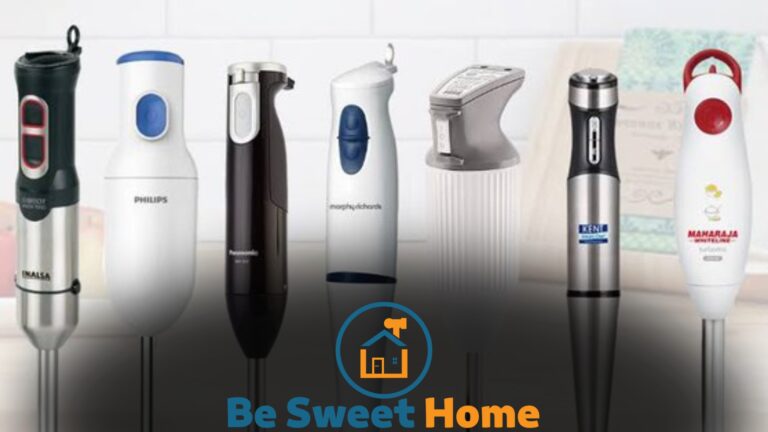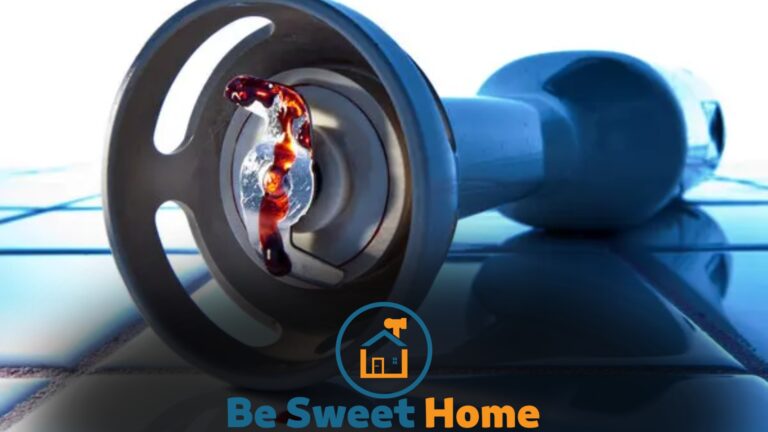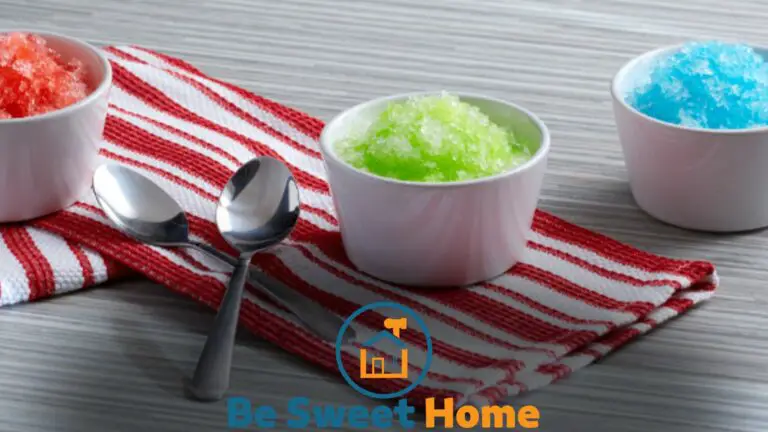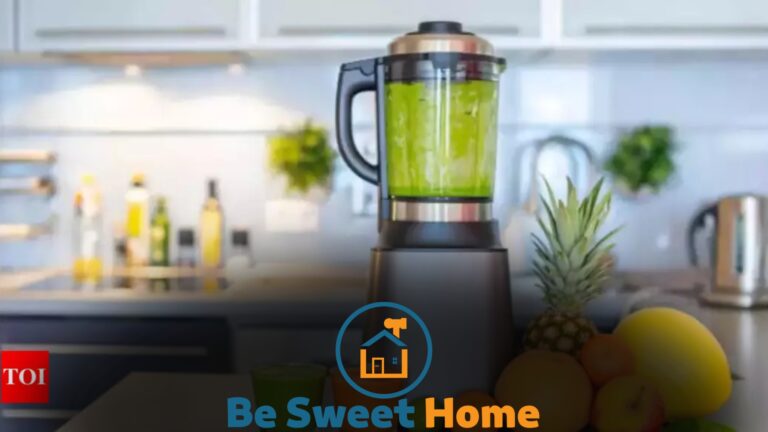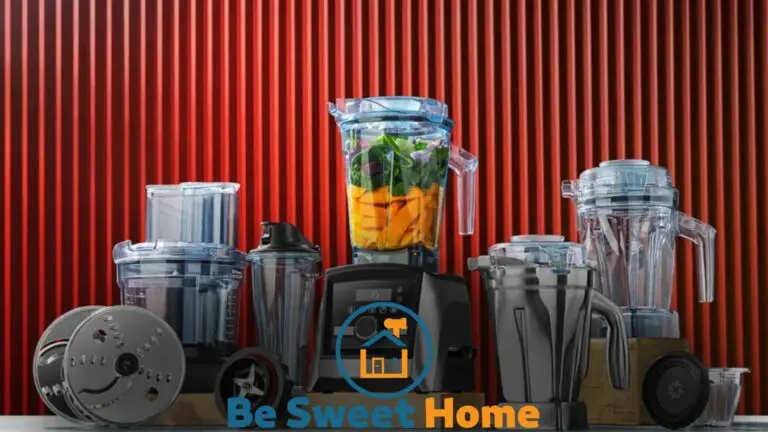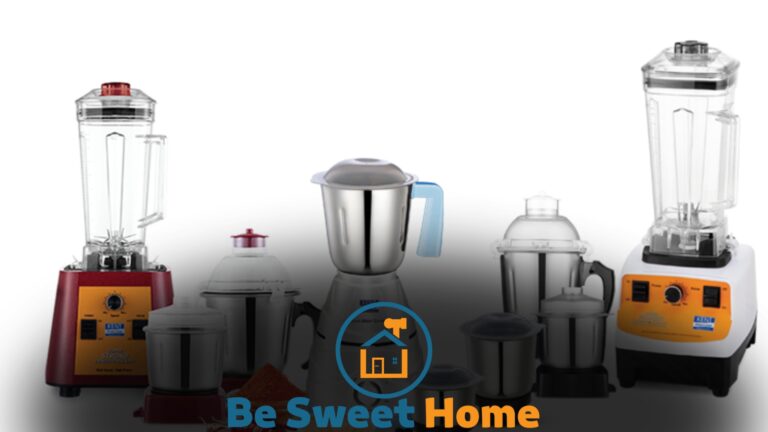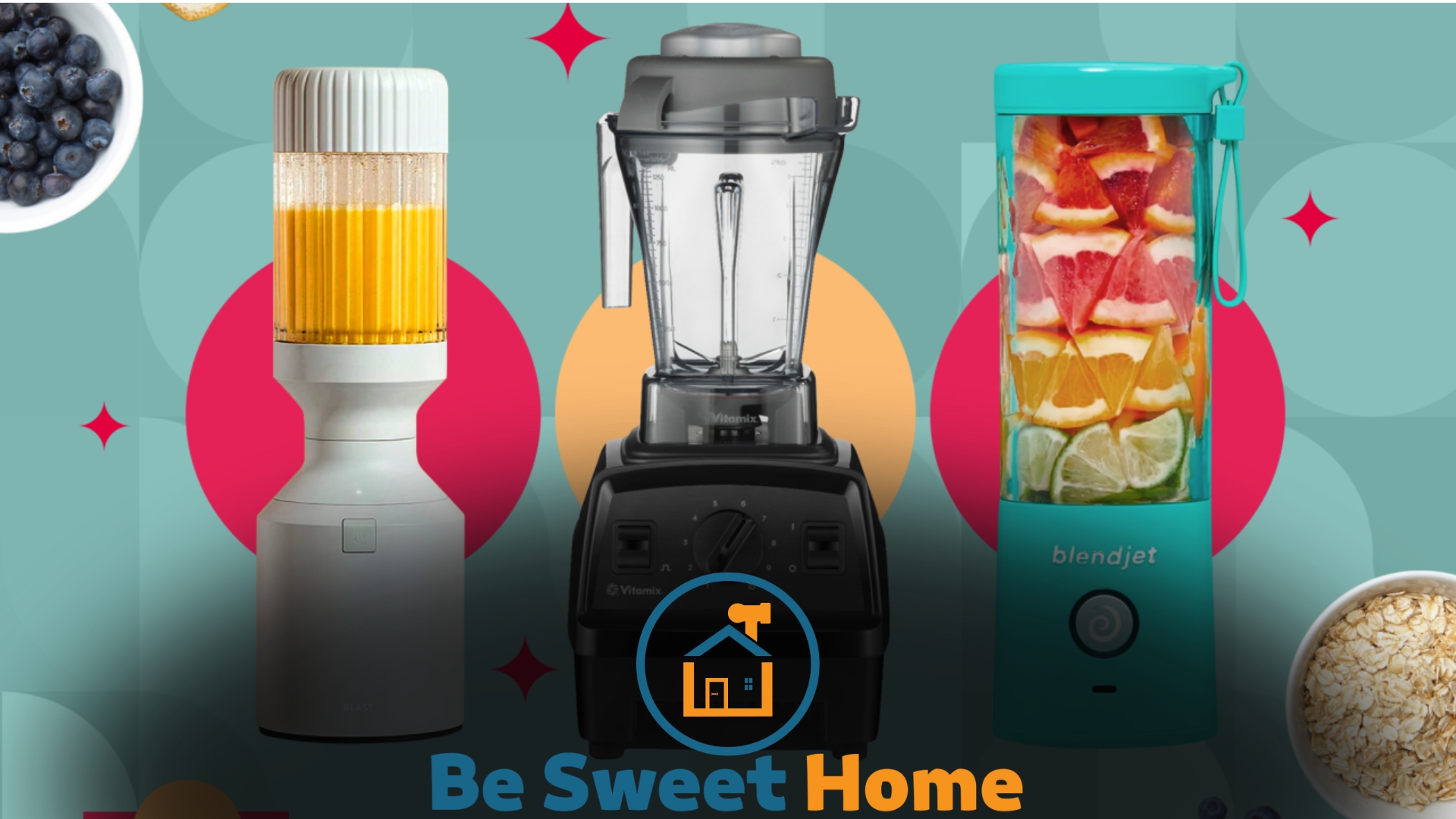

Putting ice in a blender is generally safe, provided its blades and motor are robust enough to handle it. Always consult your blender’s manual to ensure it’s designed for ice-crushing.
Blending ice can transform your beverages into refreshing treats, but it’s essential to do it correctly to prevent damage to your blender. A machine with a potent motor and sturdy blades will crush ice effectively, keeping your smoothies frosty and your cocktails chilled.
Nevertheless, not all blenders possess the power to tackle ice, which can lead to blade damage or motor burnout. To aid users in navigating this icy terrain, most manufacturers specify whether their blender models can manage the rigor of crushing ice cubes.
Checking your user guide before tossing in those cubes can save you from a kitchen mishap and extend the life of your appliance. Considering all these points, you’ll be well on your way to safely enjoying your icy concoctions.
Ice and Your Blender: Compatibility Concerns
Crushing ice can be a challenging task for many blenders. The compatibility between ice and your blender depends on several factors. These include the blade design and the motor power.
Not all blenders can handle the rigorous job of crushing ice without damaging their components. It’s essential to check your blender’s capabilities before tossing in those cubes.
Let’s dive into the key areas for safe and effective ice-crushing.
Blender Blade Design For Ice Crushing
The design of the blender blade plays a crucial role when dealing with ice. Some blenders boast blades made specifically for ice-crushing. These blades are often thicker and made from more durable materials.
They slice through ice effectively, turning cubes into perfect pieces for smoothies or cocktails. Look for blades marked as “ice-crushing” or “stainless steel.”
- Thicker Blades: Resist bending and withstand the impact of ice.
- Sharper Edges: Cut through the ice without requiring excessive force.
- Durable Materials: Prevent chipping or breaking during the process.
Motor Power Requirements for Ice
The motor’s power is another critical factor to consider. A strong motor ensures that your blender can crush ice without overheating or wearing out quickly. Blenders with at least 600 watts can usually handle ice without issues.
| Motor Power (Watts) | Ice Crushing Capability |
|---|---|
| 200-400 | Not Recommended |
| 400-600 | Limited |
| 600+ | Optimal |
Check your blender’s user manual to confirm its motor power. Ensure it’s designed to crush ice to avoid damage. Remember, using a weak motor for ice can lead to wear and tear and potentially costly repairs or replacements.
Potential Risks of Ice in Blenders
Blending ice can turn a drab drink into a frosty delight. But it’s not all smooth sailing. There are risks to consider before tossing those cubes in. Let’s dive into what could go wrong.
Wear and Tear on Blender Blades
Blender blades have a tough life. They tackle everything from soft fruits to hard ice. But ice can be a blade’s nemesis. It’s not just about a one-time blend. It’s the constant grinding that wears down the cutting edges. Dull blades struggle more and blend less. This affects your blender’s longevity. It’s like running a race on a sprained ankle — not a good idea.
Here’s how to safeguard your blades:
- Use crushed ice or smaller pieces.
- Avoid blending ice without liquid.
- Opt for blenders designed for ice.
Motor Strain and Overheating Issues
The motor is your blender’s heart. It needs to stay cool to run well. Blending ice puts extra strain on the engine. Think of it like lifting weights. Too heavy, and you risk injury. For a blender, that injury is overheating.
Overheating can cause serious damage. If the motor burns out, you’re left with a kitchen ornament.
Keep the motor happy with these tips:
- Don’t overload with ice.
- Give your blender a break between cycles.
- Check for a pulse or ice feature.
Smart blending keeps your drinks cold and your blender in shape. It’s about balancing what you blend with how you blend. Take care of your appliance, and it’ll serve up icy treats for years.
Proper Ice Blending Techniques
Perfecting the art of ice blending unlocks the secret to refreshing beverages. Before diving in with your blender, grasp the ins and outs of blending ice.
A well-crafted smoothie or cocktail hinges on technique. Let’s explore how to master the mix!
Size and Shape of Ice Cubes
The size and shape of ice cubes affect blending efficiency. Small, uniform cubes blend smoothly and rapidly. Bulky cubes may harm the blades. For best results, use an ice tray designed for blenders.
- Uniform cubes: Allow consistent blending and texture.
- Bullet-shaped or nugget ice: Easier on blades, blend effortlessly.
Pulsing vs. Continuous Blending for Ice
Blending ice is an art, and technique matters. Use the pulsing method for control and precision. Continuous blending can overwork the motor and melt the ice.
| Pulsing | Continuous Blending |
|---|---|
| Precise texture | Can lead to watery drinks |
| Prevents motor strain | May overheat the blender |
| Contributes to blade longevity | Decreased control over consistency |
Toggle between pulsing and blending. Start with short pulses to break bigger pieces. Listen for changes in the motor’s sound. Shift to longer runs as pieces shrink. Remember, patience yields the smoothest blend.
Choosing the Right Blender for Ice
When summer hits, nothing beats a frosty smoothie or a chilled cocktail. But not all blenders can handle the hard task of crushing ice. A blender that isn’t up to the task might leave you with a chunky mess.
Or worse, it could get damaged. So, it’s critical to invest in a blender that’s specifically designed to tackle ice. Here’s what to look for and some of the best options.
Key Features in Ice-crushing Blenders
When searching for the perfect ice-crushing blender, consider these must-have features:
- Powerful Motor: Look for high wattage for vigorous ice-crushing.
- Solid Blades: Stainless steel blades can slice through ice without bending.
- Sturdy Jar Material: A strong, often BPA-free plastic or glass jug will withstand the pressure.
- Ice-specific Settings: Pre-programmed settings ensure smooth results.
Top Rated Blenders for Ice
Here are some blenders that excel at turning ice into snow:
| Blender Model | Motor Power | Blade Material | Notable Feature |
|---|---|---|---|
| Ninja Professional | 1000 Watts | Stainless Steel | Large Capacity |
| Vitamix 5200 | 1380 Watts | Stainless Steel | Variable Speed |
| Blendtec Total Classic | 1560 Watts | Stainless Steel | Pre-programmed Cycles |
Safety Precautions When Blending Ice
Blending ice can be great for smoothies and cocktails. But it can also be risky. You need the right approach to stay safe and keep your blender in good shape. Here are some key safety tips for when ice meets blender.
Handling and Prep Before Blending
Prepping your ice before it hits the blender is crucial. Here’s how you do it:
- Use the right size: Ice should be small. Big chunks can harm your blender or fly out.
- Inspect for foreign objects: Make sure no unwelcome pieces hide in your ice tray.
- Even out the load: Place ice evenly in the blender to balance the mix and protect the blades.
Always remember to put the lid on tight. A loose lid can spell a mess or injury.
How To Avoid Blender Damage
Treating your blender right means it lasts longer. Here’s what you need to know:
| Action | Why it helps |
|---|---|
| Use the pulse feature | This eases the pressure on your blades. |
| Add liquid | Liquids help the ice move, making blending smoother. |
| Avoid overfilling | Too much ice can jam the blender, leading to damage. |
Listen to your blender. Strange sounds can mean trouble. Stop, check, and adjust to keep it safe.
Maximizing Blender Longevity and Performance
Blenders are a kitchen staple, perfect for smoothies, soups, and icy treats.
Keeping them in top condition means they’ll work well for years.
Pop ice in them without fear, but remember, the key to a lasting blender is care and maintenance.
Routine Maintenance for Blenders
A well-maintained blender can handle ice without a hitch. Follow these simple steps:
- Always read the manual. Know what your blender can and cannot do.
- Clean after each use. Disassemble and hand wash or use the dishwasher if safe.
- Check the blade. Ensure it’s sharp and tight. Dull blades struggle with ice and can overwork the motor.
- Inspect gaskets and seals. Replace them if they show wear to prevent leaks.
- Store correctly. Keep the jug inverted to avoid water accumulation and odor.
When To Replace or Repair
Sometimes, a blender needs more than routine care. Watch for these signs:
| Signs to Notice | Action to Take |
|---|---|
| Motor sounds strained or smells. | Consult a professional repair service. |
| Blades spin slowly or not at all. | Blade assembly might need replacement. |
| Buttons or settings fail. | Check with the manufacturer for fixes. |
| Cracks or leaks in the jar. | Replace the jar to prevent accidents and mess. |
A well-loved blender can last ages, even with regular ice crushing.
Stick to a care routine and know when to seek repairs. Your blender will thank you with performance that stands the test of time.
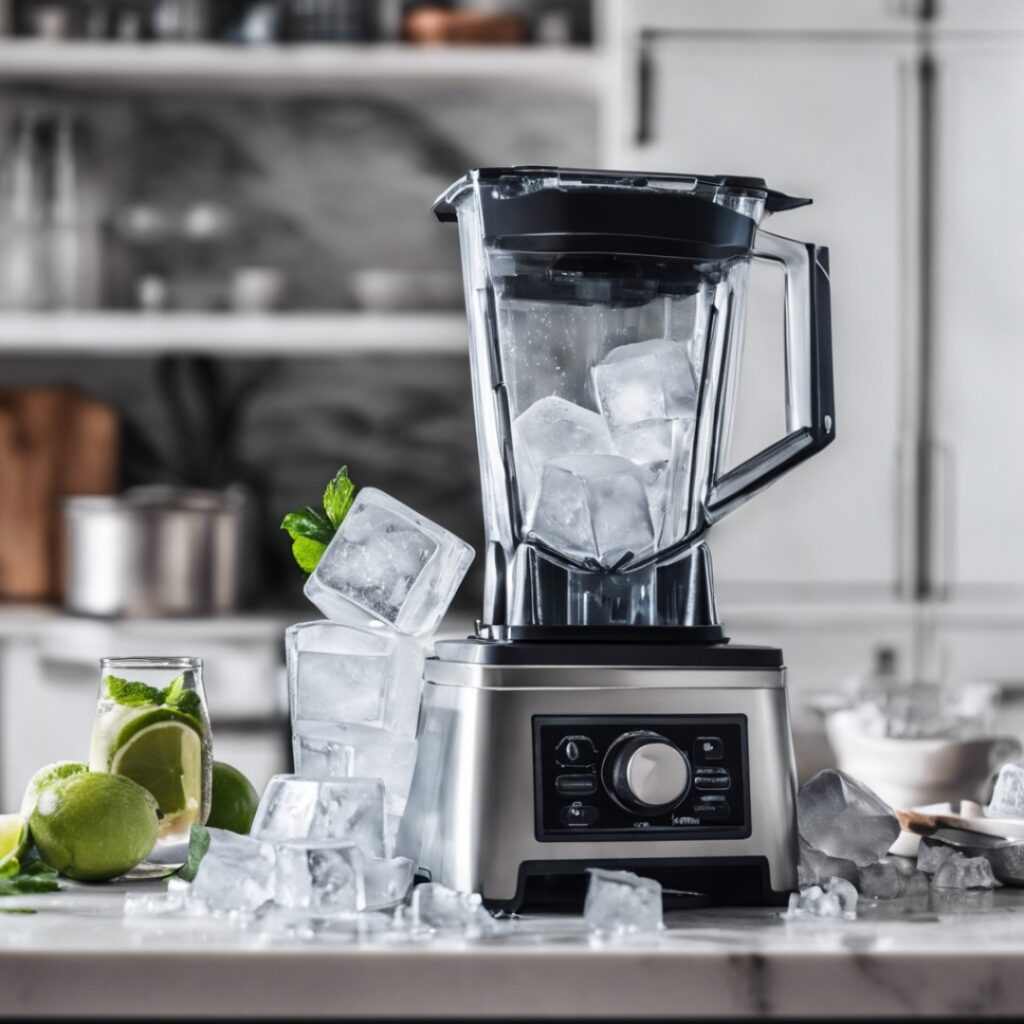
Frequently Asked Questions
Can Ice Damage Your Blender Blades?
Regular ice cubes can potentially blunt the blades over time. To minimize wear, use smaller pieces of ice or crush ice first.
How Do Ice Crushing Blenders Differ?
Ice-crushing blenders have stronger blades and more powerful motors to efficiently break the ice without damage.
What is the Safe Way To Blend Ice?
Start with pulsing before blending at high speeds, and use ice no larger than an inch to protect your blender.
Can Hot Liquid Be Mixed With Ice in Blenders?
Mixing hot liquids with ice can cause pressure buildup and potential damage. Let liquids cool before blending with ice.
Are All Blenders Capable of Crushing Ice?
Not all blenders are designed to handle ice; check the manufacturer’s instructions to ensure your model suits ice crushing.
Conclusion
Safely incorporating ice into your blending routine is achievable with the right equipment and methods. You can enjoy chilled beverages without concern by selecting a capable blender and following manufacturer guidelines.
Remember, durability and power are key to a seamless experience.
Keep blending cool, and your culinary creations will shine.

